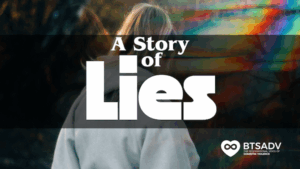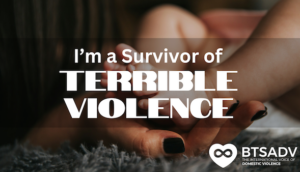Misunderstood. Different. Wrong.
These are all feelings puberty causes teenagers to experience. Now imagine you are actually called these words on a regular basis because you are a teenager who identifies as LGBTQ+. Suicide rates are higher, (one in four pre-teen suicides may be LGBTQ+) and bullying happens to LBGTQ+ youth on a mass scale, but what about domestic violence? One in three teenagers in the United States face some form of domestic violence, statistics show. This topic is not widely covered or well-researched for many reasons, but in the end, there is no excuse for it. We are forgetting about our LGBTQ+ family and friends and their experiences with domestic violence need to be further embedded in the conversation.
Statistics reveal that bisexual women face abuse by intimate partners on a higher scale with sexual abuse being the highest; 61% experiencing rape, physical violence, and/or stalking by an intimate partner. In comparison, 35% of heterosexual and 43% of lesbian women experience the above violence.
Men are shamed for showing emotions and macho culture starts young. According to this study, only 26% of gay men in same-sex relationships contacted the police following “near-lethal violence.” Near-lethal violence. Youth are already trying to navigate figuring out who they are, with LGBTQ+ youth feeling even more “different” or “other.” Fear of not being believed or in showing weakness is instilled in all victims, but forcing men to prove their masculinity by not seeking help is dangerous and deadly.
Study after study demonstrates how trauma victims have a higher chance of revictimization. Domestic violence can happen to anyone, and LGBTQ+ youth who experience domestic violence face this higher risk of victimization.
Another study showed that while 29% of heterosexual youth reported physical abuse by intimate partners, 42.8% of LGBTQ+ youth reported physical abuse.
One reason many LGBTQ+ teens do not come forward about the abuse they experience within intimate relationships may stem from their fear of being “outed.” Being outed means that someone shares a victim’s gender identity or sexual orientation without their consent or on their terms. Unfortunately, this is a tool abusers use when attempting to control their victims within LGBTQ+ relationships. “If you tell anyone, I’ll tell them you’re trans” or “If you break up with me, I’ll call your grandma and tell her you are bi” are examples of what an abuser might say to a victim in order to continue abusing them.
Due to the backlash the LBGTQ+ community already faces at large on a regular basis, many times a victim does not want to come forward because they have good intentions. They don’t want their community to experience even more brutality than it already does. These teens are afraid that revealing the abusive nature of past or current intimate partners will cause people to attack their partners and their community, and these teens are afraid of others getting hurt. They have good intentions.
The LGBTQ+ community finds support by identifying their own support systems–the idea that your family might be one that you choose and build yourself. This community may be the only place LGBTQ+ teens feel safe and secure. These teens do not want to jeopardize their sense of belonging. If an LGBTQ+ individual shares details about intimate partner violence with you, make sure you give them resources regarding support groups. This can, at the very least, help them feel secure in having a sense of community.
Because LGBTQ+ teens suffer from bullying on a greater scale than teens who identify as cisgender or straight, they may turn to the internet for human connection. There are several frightening and dangerous factors at play at this point, one of them being predators in addition to other kinds of abuse and domestic violence.
How can we help? Well, studies show that just one supportive adult cuts the chance of an LGBTQ+ youth committing suicide by 40%. If one supportive adult can cut the chance of suicide, imagine what it can do for non-suicidal teens who are experiencing intimate partner violence and need a safe space. Starting with just simply understanding, accepting and loving them, no matter their gender identity or sexual orientation is meaningful.
Be a safe space. Make sure the teens in your life know they can trust you and go to you in confidence. If they do open up about violence, make sure you don’t shame them or the LGBTQ+ community by making sweeping generalizations. Regardless of your perspective, doing this can further isolate LGBTQ+ youth. Respond with love and resources. Most states have gender neutral laws regarding domestic violence; get to know these laws with the teen.
Education regarding domestic violence for adults and teens alike is still slim, but LGBTQ+ resources need to be added in the conversation. When we survey, teach or discuss these issues, including LGBTQ+ issues, resources and statistics is a start. Being a dedicated and passionate ally, wherever you are, whether that’s in class, in a family discussion or on Twitter, is another start.
Let’s all vow to go above and beyond for these teenagers, who likely haven’t received the foundational support they need. Our LGBTQ+ youth cannot be forgotten. For our LGBTQ+ youth reading this; know you are not wrong, or bad, or undeserving. You are loved. I see you. I believe you. You can get through this.
If you or someone you know is in an abusive relationship, there is help. You can visit the Break the Silence Against Domestic Violence website at www.breakthesilencedv.org or chat with one of our helpline advocates at 855-287-1777.
You can also find additional resources for LGBTQ+ youth here:



